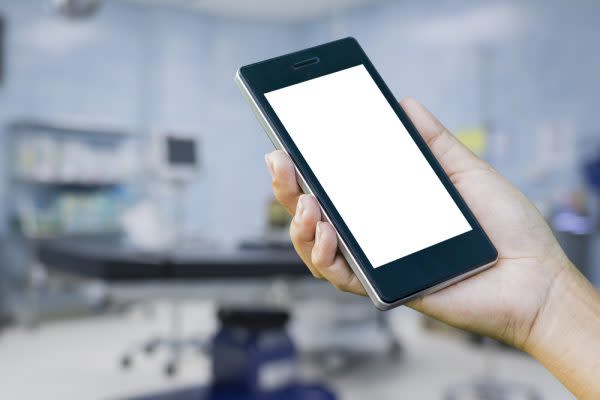Treat diabetes with a smartphone? Here’s how it could happen.
Chinese scientists have had success with a trial diabetes therapy that controls hormone secretion in diabetic mice. They implanted the mice with a LED that responds to infrared light and genetically engineered their cells to manufacture drugs in response to light, and used the infrared communication function of a smartphone to transmit a signal to the LED. They hope the technology will be used to treat chronic diabetes and other patients in the future.
Hormone secretion prompted after blood sugar level data transmitted to smartphone
Source: Shutterstock
In non-diabetics, blood sugar (glucose) is regulated by the secretion of insulin, which reduces the blood sugar level, and another hormone, glycogen, which has the opposite effect. In diabetics, for some reason insulin production does not function properly, resulting in a blood sugar count that is too high.
There are two main types of diabetes: type 1, in which cellular disorder in the pancreas prevents it secreting any insulin; and type 2, in which the pancreas does not produce enough insulin or the body’s cells do not react to the insulin properly. Diabetes can result from genetic abnormality, as a side-effect of certain drugs, or from illness or pregnancy. The key to treating diabetes is to keep the level of glucose within prescribed limits.
The trial – conducted by Chinese scientists from a number of different institutions – was an epoch-making experiment using optogenetics (which involves genetically engineering the protein molecules in certain cells to activate in response to light, and manipulating them by exposing them to light).
The trial was configured so that data about the blood sugar count was automatically transmitted from a system set up to measure blood glucose to a smartphone, and the mice’s blood sugar level was measured at regular intervals. The data received by the smartphone was analysed by a special app, which calculated the required dose of insulin. When insulin was required, the smartphone sent a signal to the implanted LED, which emitted light, triggering the cells to secrete the hormone.
A possible role in preventing diabetes complications
The researchers claim they were able to keep the mice’s blood sugar level stable over the course of the several week duration of the trial. If the therapy progresses through the development stages, it could find application in the treatment of human diabetes. It would be particularly useful in liberating type 1 diabetes patients, who need to inject insulin, from the palaver of injections.
It would also be likely to prevent the development of diabetes complications such as diseases of the eye (diabetic retinopathy), kidney (diabetic nephropathy) and terminal nerves (diabetic neuropathy).
Professor Jiawei Shao of Shanghai’s East China Normal University, who participated in the study, is confident that genetic engineering will enable scientists to make human cells produce insulin, but acknowledges that artificial manipulation by digital sensors is inferior to the natural working of the human body.
Medicine taking great strides forward thanks to technology
With smartphones now a part of everyday life, we are seeing increasing numbers of new uses targeting the world of medicine. In the last few years, the focus has been on the management and processing of patient data using the cloud, big data and machine learning.
The development of a stream of specialised medical smartphone apps has improved communication between doctors and patients, and also been a helpful tool for people in managing their health, by measuring and recording such indicators as blood pressure, heart rate and cholesterol levels.
Following his success in regulating blood glucose using a smartphone, Professor Shao predicts that we will see the ever increasing introduction of the latest technology and medical techniques in the treatment of chronic patients. The treatment of diseases like diabetes that have previously only been treatable with drugs is about to undergo dramatic change thanks to technology.
(By ZUU Japan)
Related Articles
- Parents, are you overusing your smartphones yourselves?
- How can the use of smartphones and tablets help SMEs?
- Smartphones: The new relationship wrecker

 Yahoo Finance
Yahoo Finance 


